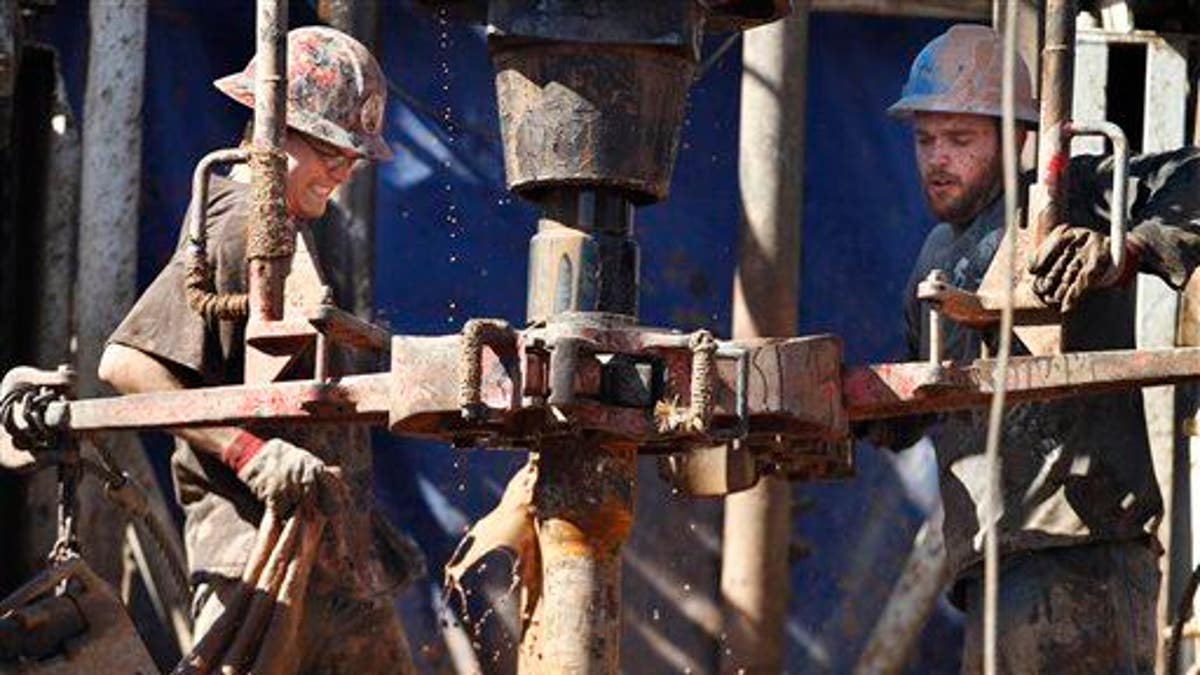
In this Tuesday, Feb. 21, 2012 photo, oil field workers drill into the Gypsum Hills near Medicine Lodge, Kan. (AP Photo/Orlin Wagner)
Southern Kansas and Oklahoma are experiencing small, daily quakes linked with fracking that make a larger and more destructive earthquake much more likely, according to a new, unpublished federal study.
The risk remains low—about a 1 in 2,500 years' chance—but if true, it ranks the region among top-risk areas east of the Rocky Mountains, the AP reports.
Those areas include Charleston, SC, and New Madrid, Missouri, which both suffered serious earthquakes during the past 200 years. "The more small earthquakes we have, it just simply increases the odds we're going to have a more damaging event," said geophysicist William Ellsworth after presenting the study to a science association.
A Kansas geological official responded with, "We are worried about this, no question about it." Meanwhile, another study says that hidden geological faults in Oklahoma are ready to to burst—including ones that were just discovered and may damage vital structures, LiveScience reports.
Published in the journal Geophysical Research Letters, the study located faults by looking at more than 3,600 recent earthquakes in Oklahoma. "These faults are all in rock layers that existed when the dinosaurs were around," says study author Daniel McNamara.
"Some of them haven't been active since then." On the bright side, a third study shows that fewer faults in Montana and the Dakotas—also drilling "hotbeds"—are ready to pop, and Ellsworth says the rate of man-made quakes has actually dropped in some "fracking states," like Arkansas and Ohio.
(Is the eastern US also due for a "big one"?)
This article originally appeared on Newser: Oklahoma Quakes Raise Risk of 'Big One'
More From Newser
